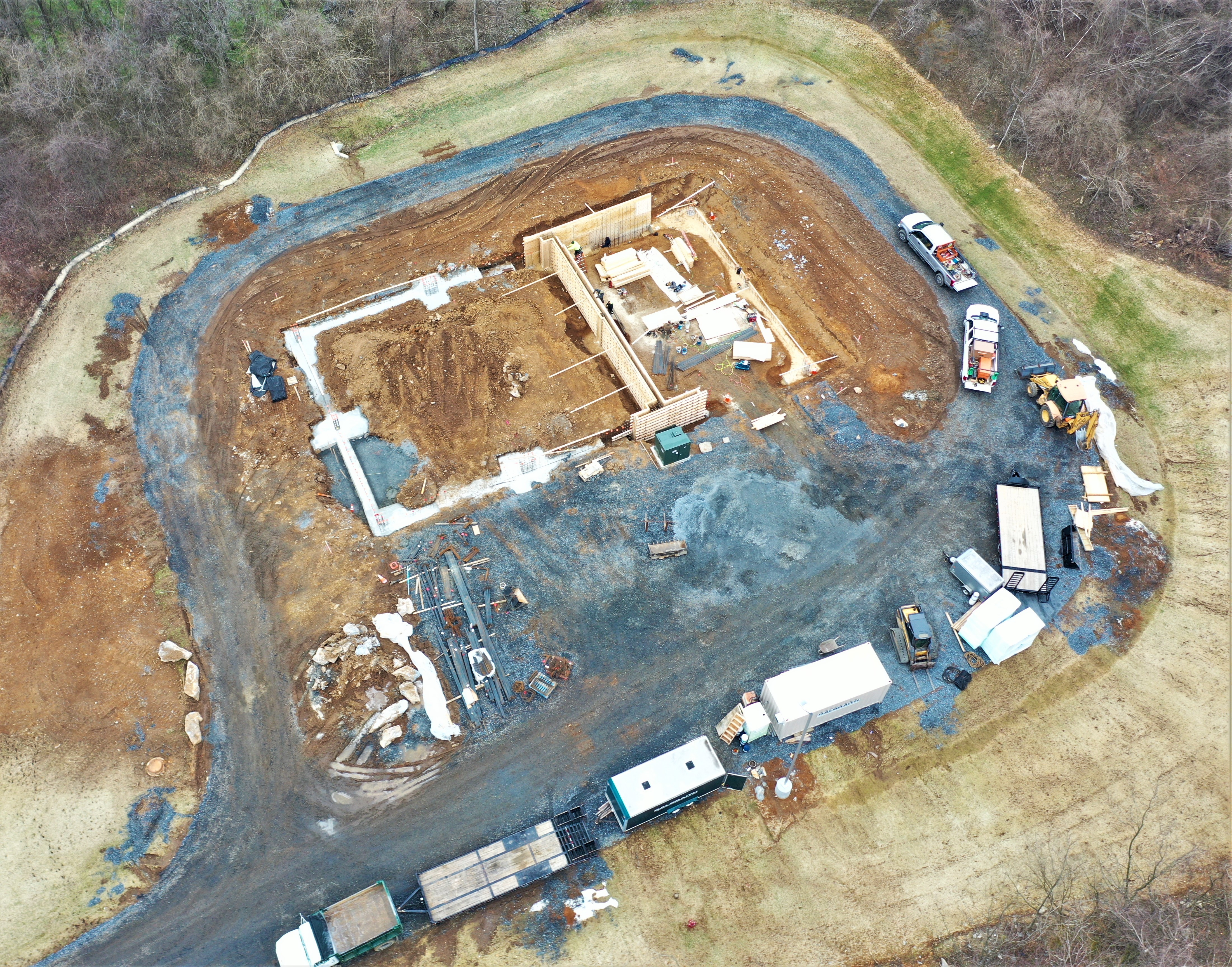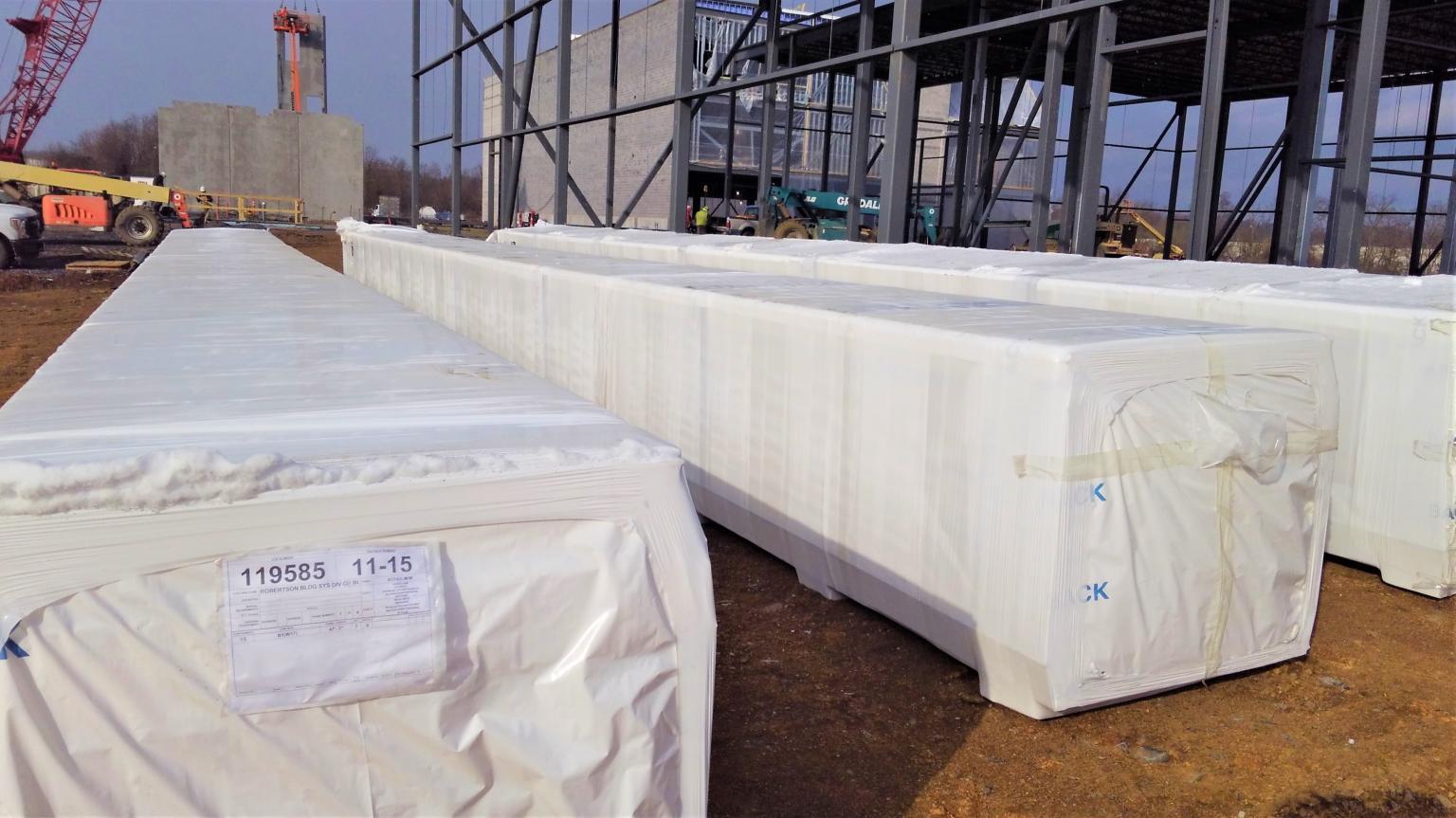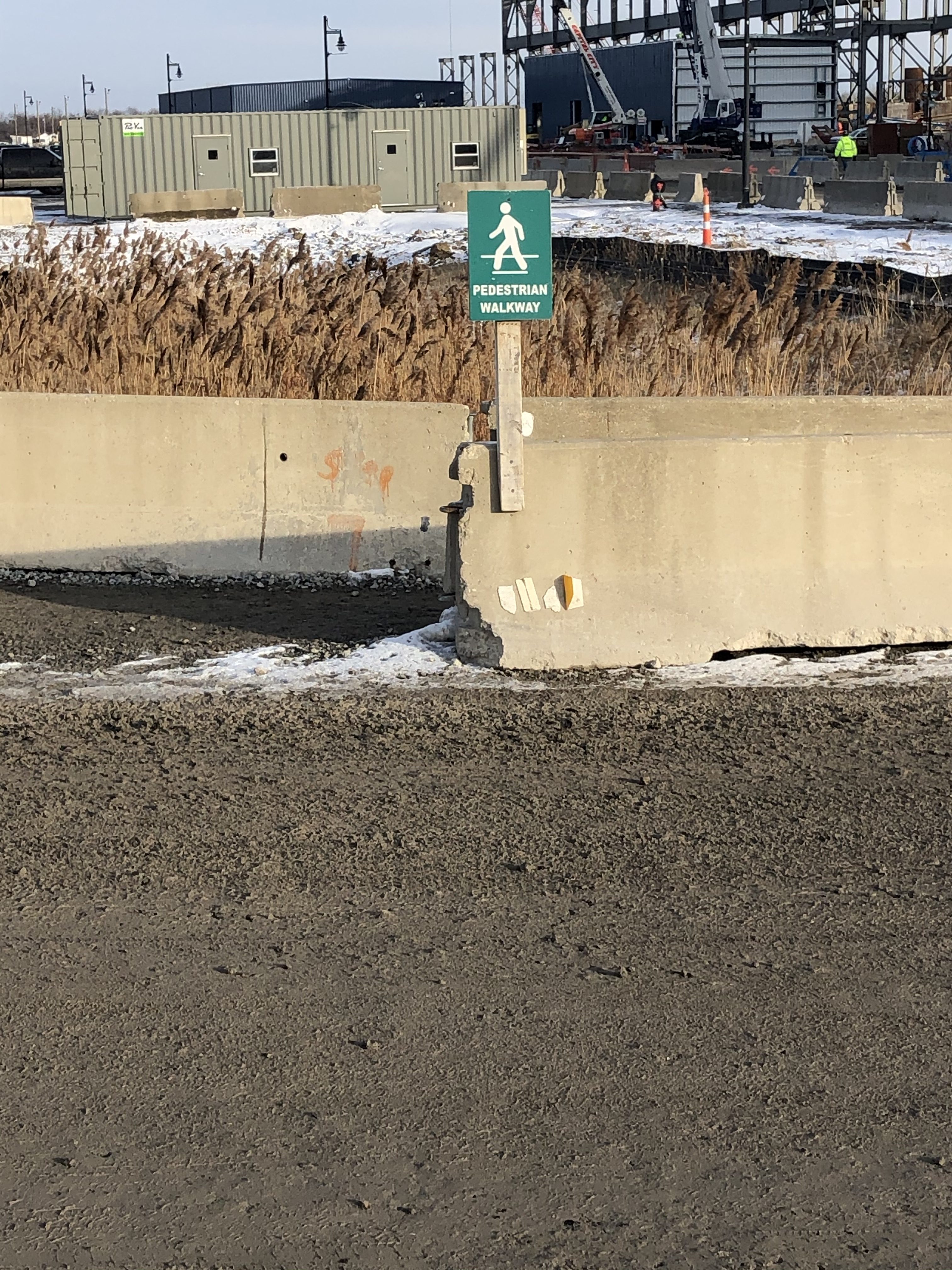Construction sites are busy places with intersecting traffic between cars, trucks, cranes, mobile equipment, industrial vehicles and pedestrians, such as workers, managers, delivery staff and visitors.
Practices to prevent traffic accidents on job sites

At this Galbraith/Pre-Design project workers are forming and pouring reinforced concrete foundation walls. This photo was taken with a drone giving a full birds-eve view of the site. (Photo courtesy of Galbraith Pre-Design Inc.)
Managing traffic at a construction workplace is an important part of site safety. Construction vehicles moving in and around a site, reversing, loading and unloading are often linked to accidents and injuries. Inadequate planning and control are the root causes of many construction vehicle accidents.
Plan Ahead
Mark Galbraith, vice president and owner of Galbraith Pre-Design Inc., Carlisle, Pa., explains that safety between vehicles and pedestrian traffic at construction sites has been a major concern in the industry for numerous years. “The No. 1 priority to prevent any safety issues between these parties at construction sites is to enable each party to travel to, from and within the site separately.”
To effectively do that, it helps to plan ahead. “It’s essential while planning the layout of the construction site that plans are in place for maneuvering both people and vehicles, as well as closely monitoring operations once you’re in full swing at the site combined to optimize your site’s safety between vehicles and pedestrians,” Galbraith adds.

Using effective and safe construction site traffic management, these building components are being unloaded, shaken-out and staged. (Photo courtesy of Galbraith Pre-Design Inc.)

To build this truck shelter in an active utility company yard, this site was separated with barriers to define the limits of the construction site from the active yard. (Photo courtesy of Bel-Con Design-Builders Ltd.)
Tom Gunsinger, president of Bel-Con Design-Builders Ltd., Belleville, Ontario, Canada, agrees that one of the most important factors when beginning a project is proper planning of all aspects of the site. “[This includes] how these aspects relate to how the project will be constructed so that proper staging areas are established along with clearly defined routes for material deliveries and site construction equipment operation so that conflicts with pedestrians are minimized. This can be accomplished by situating site facilities that have high pedestrian traffic such as site trailers, washroom facilities, tool storage, etc., as close as practical to the building itself and, if possible, on the opposite side of the site from truck and material delivery areas.”
Since it’s nearly impossible to completely and constantly separate workers from mobile equipment, Mark A. Hoffman, CSP, safety and health director at Rudolph Libbe Inc., a Rudolph Libbe Group company, Walbridge, Ohio, agrees that consideration must be given to separating pedestrian walkways and vehicular travel paths in high-traffic areas when appropriate. “In operating facilities, we communicate with facility owners to ensure that we understand travel paths for their people and equipment, and we make sure that information is incorporated into our planning before work begins.”
To help effectively preplan construction site traffic, drones can provide an easy way to overlay actual site conditions with models to see potential conflicts. Knowing where these conflicts are enables quick improvements. Gunsinger believes drones help in more complicated sites by providing digital photos used to create mark-ups of the site before construction and then reviews of the site through construction to look for problem areas of vehicle pedestrian crossings by watching the movement on the site.

“It is rarely the case that a Google Maps satellite image conveys the full picture of existing site conditions and potential pedestrian traffic issues,” says Joseph Allen, safety and training manager, Thomas Phoenix International, Eastampton, N.J. “Drones are an excellent tool both for documentation of extant conditions and for illustration of safety plans. It’s important to check the local flight restrictions before considering the use of a drone as a planning tool. Proximity to airports, prisons or other flight-restricted zones could prohibit drone use. [There are] on-line drone advisory geo-maps showing some of the restrictions. The FAA has their own mobile app called B4UFLY which is intended for recreational drone pilots, but which will also help check if there are any local restrictions.”
Site Logistics
Site logistics are an extremely important part of setting up a project. Pedestrian and vehicle access points are part of the public-facing aspects of a project and are the first opportunities to establish the value of the workforce on a project site. “We should think about the craft worker experience as they are entering the project site and how it can set the tone for the entire project, highlighting that we care about each worker,” says Michelle Gray, EHS leader core construction, DPR Construction, Sacramento, Calif. “Having a clean, organized entrance/exit also shows the public that DPR intends to be a good neighbor.”
Basic traffic flow in and out of project must be considered. Minimize the impact to the neighborhood and the public while making traffic flow efficient and safe for the project team. Pedestrian access and vehicle access points should be segregated from each other; they should be secured or monitored to prevent unauthorized access to the site.

“Speed limits should be posted on the job site where applicable to help control all vehicle traffic,” Gray says. “Traffic flows should be planned out and coordinated to keep speeds low and minimize travel routes to reach parking, trailers, loading and unloading zones. It is safer to have vehicles make right-hand turns into and out of the project site. This prevents the need for crossing traffic. The access gates into the site should be large enough to accommodate equipment turning into the site and should be positioned to provide unobstructed views to street traffic. Traffic mirrors positioned to help pedestrians and vehicles see around blind spots can help.”
To ensure safe site logistics, Galbraith plans one-way travel systems. “Many safety incidents within the industry occur at construction sites when large vehicles are backing up and experiencing significantly reduced visibility in a place where pedestrians could be. Providing a one-way path for these types of situations can greatly reduce this risk.
Gray explains that deliveries and offloading of equipment should be done within the project site fences and that ideally, they can drive in one gate and out the next or be able to turn around without having to back out. “Spotters should be used when a delivery truck must back up on a job site. If site conditions do not permit on-site access and deliveries will be from the street, coordination with the local authorities is a must to ensure that lane closures are safe for the project team and the public.”
Allen explains when performing new construction or renovations near existing buildings, restricting access from inside the building to the construction site is often overlooked. “General industry employees love to poke their heads outside and see what’s going on. Communicate concerns to site management before work begins.”

Visibility and Signage
Ensuring visibility is extremely important when people need to be in the same area as mobile equipment and vehicles. Proper PPE and situational awareness increase safety. Hoffman explains everyone on his projects must wear green high-visibility outer garments to ensure consistent recognition of workers on the job site. “Workers are also trained to approach mobile equipment from the front, establish eye contact with the operator and get the operator’s permission before approaching the equipment.”
Increase visibility by avoiding blind spots on walkways, entrances and at crossings. Gray explains some of the most frequent points of conflict between pedestrians and vehicles are from instances when there is lack of visibility due to lighting or obstructions that do not allow clear line of sight. Allen cautions that steel staging areas need to be marked with cones or traffic barrels. “Low piles of steel are easy to miss (or hit) from the cab of a big truck,” he adds. “Stacks of girts and sheeting need to be clearly marked.”
At Galbraith Pre-Design’s job sites its drivers can see a considerable distance both ways and at every transition point to a different road (whether still part of the site or out onto the public road), making sure they would see any other vehicle traffic or any foot traffic that may be near them before they make any further progress. Additionally, all personnel wear bright and reflective clothing; lights combat bad weather and overnight work.
Gunslinger stresses the importance of signal persons, back-up indicators and circle checks before moving a vehicle or piece of equipment and maintaining clear unobstructed roads and walkways. “Ideally establish single-entrance point to the site for sign-in and control of who attends the site. Signage on-site is essential from a compliance standpoint.
Clear signage to entrance along with signage for all required PPE and also clearly marked multiple exit points for emergency situations. All should be signed clearly so that both pedestrians and vehicles are well aware of the locations. The use of stop signs at these locations for both pedestrians and vehicles will help ensure both are cognizant of the interaction of pedestrians and vehicle traffic.”
ANSI Safety Signs ensure traffic site management is universally understood. “One common mistake is signs that are not large enough to be seen from a long enough distance to give vehicle traffic an opportunity to react,” Gray explains. “Signs are often placed at the site entrance to provide basic information such as PPE requirements. It is also an opportunity to share some of care and concern that we have for workers, and establish the incident-free environment we cultivate.”

This is a comparison of a Google Maps photo (bottom half) versus a drone photo (top half) for construction site management. (Photo courtesy of Thomas Phoenix International)





